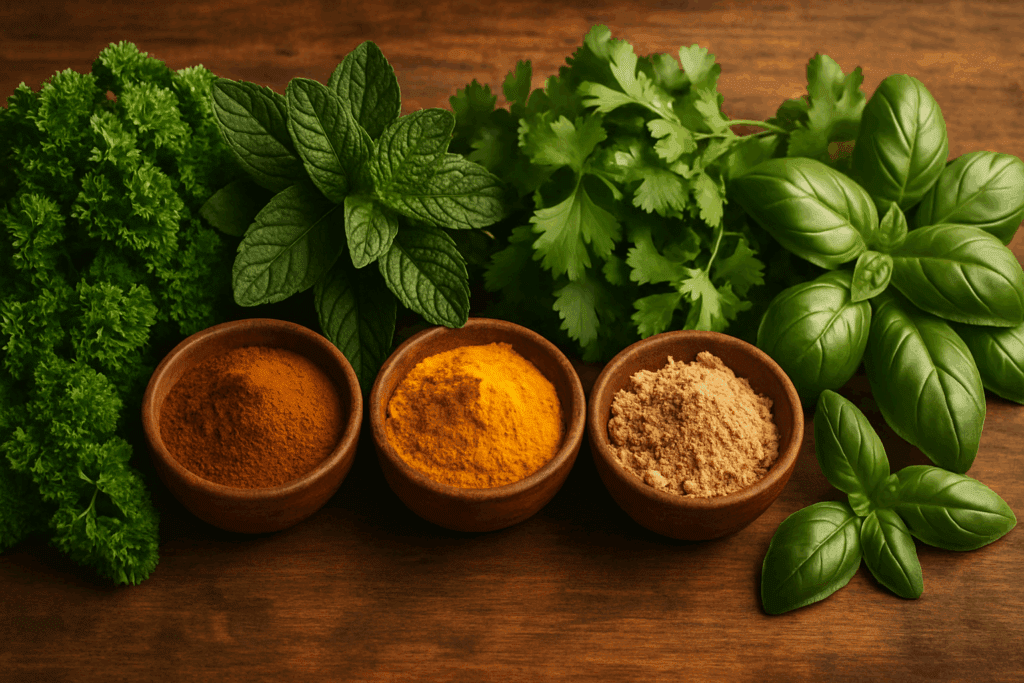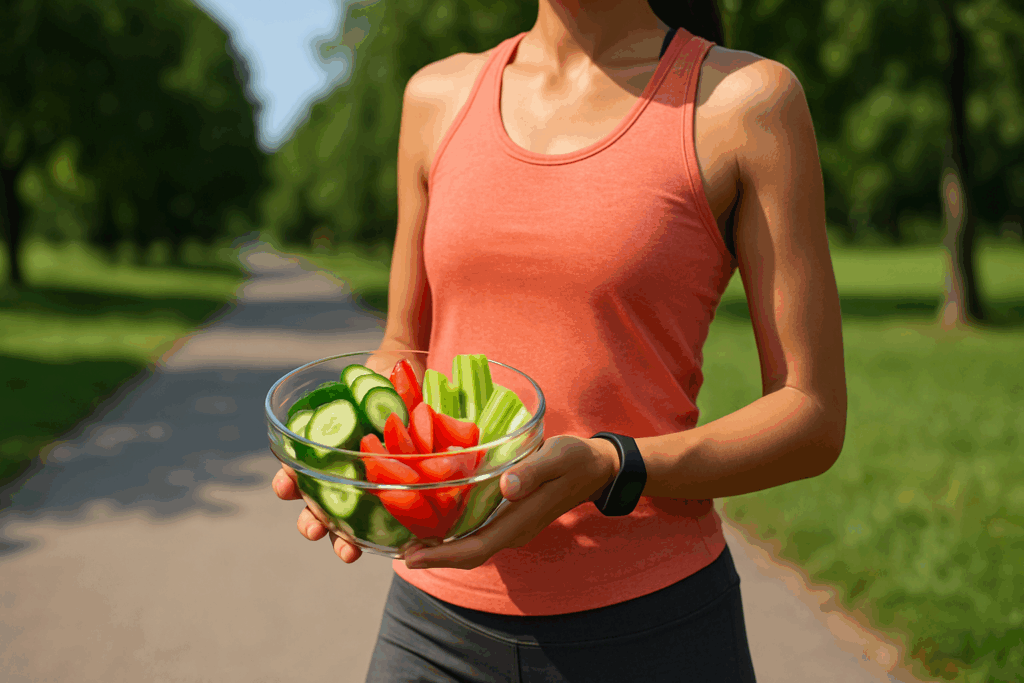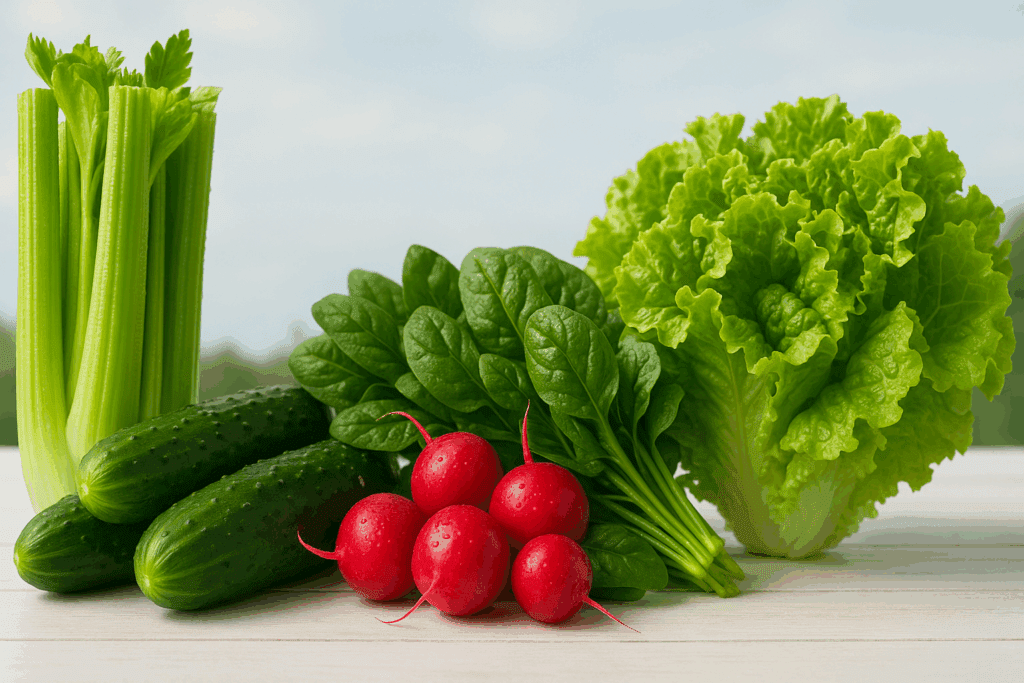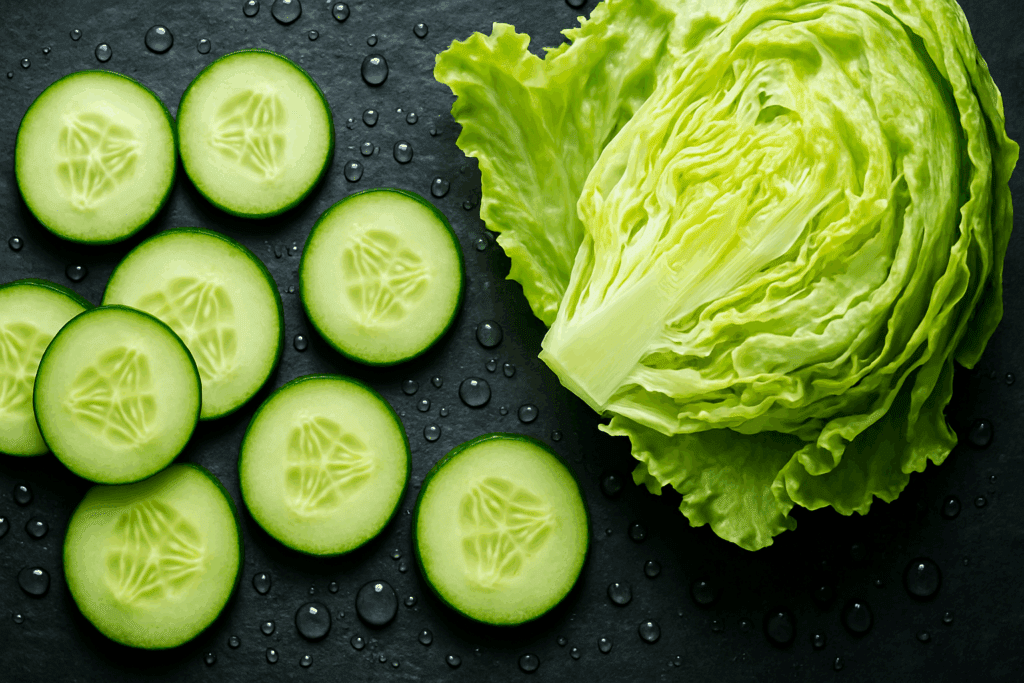In an era where wellness is no longer a trend but a lifestyle, the concept of “zero calorie” has become a magnet for health-conscious consumers looking to manage weight, support metabolic function, and optimize daily nutrition. While the term “0 calorie snacks” may seem contradictory at first glance, science supports the idea that certain foods—through mechanisms like thermogenesis, fiber content, and water density—can offer near-zero caloric impact while still satisfying cravings. These snacks are not only relevant in dietary circles focused on weight loss but also in preventive health strategies that emphasize metabolic stability, blood sugar control, and digestive balance. For readers exploring sustainable dietary changes, understanding which no calorie snacks are genuinely beneficial and how to incorporate them into daily life is crucial.
You may also like: 4 Ways to Have a Healthy Diet: Expert Tips Backed by Science for Better Nutrition and Long-Term Wellness
The popularity of zero calorie foods snacks is tied to a larger shift toward nutrient density, mindful eating, and metabolic efficiency. In this article, we will take an evidence-based journey through the best no calorie snacks and explore the science behind their classification, their role in daily wellness, and how they can support goals ranging from fat loss to cognitive clarity. Drawing from nutrition science and medical literature, this guide aims to offer clear, credible insights into a niche yet increasingly important facet of modern nutrition.
What Does “Zero Calorie” Really Mean?
The term “zero calorie” can be somewhat misleading if interpreted too literally. From a biochemical standpoint, every food contains some caloric value, even if negligible. The U.S. Food and Drug Administration (FDA) allows manufacturers to label products as having “0 calories” if they contain fewer than five calories per serving. This regulation provides leeway for certain foods and ingredients, especially those consumed in small amounts or used for flavoring, to be promoted as zero-calorie options. In practical terms, many of these foods do not significantly contribute to total daily caloric intake.
From a metabolic perspective, some zero calorie foods snacks actually require more energy to digest than they provide, a phenomenon referred to as the thermic effect of food. Celery is a commonly cited example—it contains fiber and water, but its caloric load is so minimal that the energy required to chew and digest it may equal or exceed the energy it provides. While this idea is often oversimplified in popular media, the underlying principle highlights the value of low-calorie, high-fiber plant foods in supporting weight management and digestion.
Understanding this distinction is vital for informed dietary planning. Incorporating 0 calorie snacks doesn’t mean consuming literally energy-free items, but rather focusing on options that have minimal impact on caloric balance while maximizing volume, satiety, and nutrition. This approach supports mindful eating practices, helping individuals avoid overconsumption while still feeling satisfied.

How 0 Calorie Snacks Support Weight Management
Weight management is fundamentally tied to the balance between energy intake and expenditure. When the goal is to reduce body fat or maintain a healthy weight, the inclusion of no calorie snacks can play a strategic role in reducing overall caloric load without triggering hunger or deprivation. The satiety factor of these snacks often lies in their fiber content, water volume, or their ability to stimulate chewing and digestion, which can promote a sense of fullness.
Vegetables such as cucumbers, zucchini, and radishes are excellent examples of 0 calorie snacks that provide hydration and crunch without excessive caloric contribution. Their low glycemic index also means they won’t spike blood sugar levels—a critical consideration for individuals managing insulin sensitivity or metabolic syndrome. The act of snacking itself is not inherently harmful; it’s the quality and caloric density of the snack that determines its health impact. Swapping a bag of chips for sliced jicama or bell pepper strips dramatically alters the nutritional outcome.
Moreover, these low-calorie options often carry secondary health benefits. Many no calorie snacks contain phytonutrients and antioxidants that support cellular repair, inflammation reduction, and cardiovascular health. This means that their value extends beyond calorie count, providing long-term wellness dividends that align with the principles of preventive medicine.

Digestive Health and Fiber-Rich Zero Calorie Foods
Fiber is a key player in the story of zero calorie foods snacks. While fiber technically has a caloric value of about two calories per gram, it is not digested in the same way as other macronutrients. Insoluble fiber passes through the digestive tract largely intact, adding bulk to stool and supporting regular bowel movements. Soluble fiber, on the other hand, forms a gel-like substance in the gut that slows digestion and helps regulate blood sugar levels.
Vegetables such as celery, lettuce, spinach, and cabbage are particularly high in insoluble fiber and water, making them excellent candidates for snacking between meals. These foods support gastrointestinal motility, reduce bloating, and may contribute to a lower risk of colorectal disorders over time. Because fiber slows the rate at which food exits the stomach, it helps individuals feel fuller for longer, which is a crucial factor in curbing overeating.
The gut microbiome also benefits from regular consumption of fibrous zero calorie foods. Prebiotic fibers found in leeks, asparagus, and artichokes feed beneficial gut bacteria, fostering a diverse microbial community that is associated with improved immunity, mental clarity, and even mood regulation. Thus, choosing 0 calorie snacks that are rich in fiber is not only about caloric control—it’s about nourishing the body from the inside out.
Hydration and Volume: The Role of Water-Dense Foods
Water plays an underrated but essential role in satiety, digestion, and nutrient absorption. Foods with high water content tend to have lower energy density, meaning they provide fewer calories per gram. This makes them ideal for snacking purposes, especially for individuals focused on appetite control and weight management. When combined with fiber, the satiating effect of water-rich foods is further amplified.
Crisp, hydrating vegetables like cucumbers, celery, and iceberg lettuce are often overlooked as powerhouses of nutrition and volume. Despite their low caloric impact, they deliver key micronutrients like potassium and vitamin K, which are vital for electrolyte balance and blood clotting, respectively. Their high water content also supports hydration, which is linked to cognitive function, skin health, and metabolic efficiency.
Incorporating these types of no calorie snacks throughout the day can prevent the kind of low-level dehydration that often masquerades as hunger. People who feel the need to graze may simply be thirsty, and snacking on water-dense vegetables offers a solution that addresses both thirst and the oral fixation often associated with cravings. As such, these foods contribute to both physical wellness and mindful behavioral habits.

Flavor Without Calories: The Power of Herbs and Spices
While herbs and spices are typically used in small quantities, their ability to transform the sensory experience of food makes them indispensable in the zero calorie foods snacks category. Items like parsley, basil, mint, and cilantro offer vibrant flavors with virtually no caloric burden, allowing health-conscious individuals to elevate bland snacks without relying on added fats, sugars, or salt.
Beyond flavor, many herbs possess medicinal qualities that align with broader wellness goals. For example, mint has been shown to aid digestion and reduce nausea, while parsley is rich in vitamin C and flavonoids with antioxidant properties. Using fresh herbs to garnish cucumber slices or infuse water can enhance the appeal of no calorie snacks and encourage greater dietary adherence over time.
Spices like cinnamon, turmeric, and ginger also provide depth of flavor along with functional health benefits. Cinnamon, for instance, may help stabilize blood glucose levels, while ginger is known for its anti-inflammatory properties. Including these spices in snack recipes—such as dusting cinnamon over jicama slices—can add variety and satisfaction to an otherwise simple food.
Zero-Calorie Condiments and Creative Pairings
Many zero calorie condiments can enhance the appeal of low-calorie snacks without compromising dietary goals. Mustard, hot sauce, vinegar-based dressings, and certain sugar-free pickles fall into this category. When used judiciously, they can transform raw vegetables into crave-worthy snacks that align with both weight management and metabolic wellness strategies.
One popular technique is pairing water-dense vegetables with a dash of apple cider vinegar and herbs. This combination not only enhances flavor but also supports blood sugar regulation and digestive health. Pickled vegetables made without added sugar can serve a similar role, offering crunch, tang, and gut-friendly probiotics with minimal caloric impact.
Another creative pairing includes dipping raw endive leaves into a mustard-based dressing seasoned with turmeric and black pepper. This fusion of taste and functionality elevates the snack from mere sustenance to a wellness ritual. The use of zero calorie condiments encourages variety and personalization—key factors in sustaining healthy habits over the long term.

The Role of Chewing and Sensory Satiety
Physical satiety is not just about volume—it’s also about time and texture. The act of chewing plays a surprisingly important role in appetite regulation. Foods that require more mastication, such as raw carrots, celery sticks, or sliced fennel, extend the eating experience and send stronger satiety signals to the brain.
Sensory satiety refers to the decline in the pleasure of eating as the meal progresses, which is influenced by flavor, texture, and temperature. Rotating different types of 0 calorie snacks throughout the week can help prevent palate fatigue and enhance satisfaction. For instance, alternating between crunchy vegetables, chilled herbal teas, and lightly spiced cucumber slices can keep snack time engaging without adding excess calories.
This concept is particularly relevant in behavioral nutrition, where individuals may mistake boredom for hunger. Engaging the senses through visually appealing, aromatic, and textured foods can provide psychological satisfaction that deters mindless eating. In this context, no calorie snacks serve not only as nutritional tools but also as behavioral strategies for managing food-related habits.
Cognitive and Emotional Benefits of Healthy Snacking
While physical health is often the focus of nutritional discussions, the emotional and cognitive dimensions of food choices are equally significant. Consuming no calorie snacks that are colorful, crunchy, and flavorful can improve mood, reduce stress, and provide a sense of control in one’s dietary journey. These foods often require minimal preparation, making them accessible choices for individuals seeking low-effort wellness solutions.
The ritual of preparing and consuming a healthy snack can act as a micro-break in a busy day, promoting mindfulness and stress reduction. For example, taking five minutes to prepare a plate of chilled cucumber slices sprinkled with lemon juice and chili powder offers a moment of intentional self-care. This routine reinforces healthy behaviors and contributes to overall emotional well-being.
Moreover, staying hydrated and nourished with water-rich, fiber-dense snacks supports cognitive function, including focus, memory, and reaction time. Studies have shown that even mild dehydration can impair mental performance. By integrating 0 calorie snacks into the daily routine, individuals can foster better mental clarity and productivity, linking nutritional choices with tangible quality-of-life improvements.
A Word on Artificial Sweeteners and Zero-Calorie Packaged Snacks
While this article emphasizes whole-food-based no calorie snacks, it’s important to acknowledge the role of packaged items labeled as “zero calorie” due to artificial sweeteners. Sugar substitutes like sucralose, aspartame, and stevia are commonly used in diet sodas, gums, and flavored waters. While these may technically contain few or no calories, their impact on metabolism, appetite regulation, and gut microbiota is still under investigation.
Some studies suggest that artificial sweeteners may interfere with glucose tolerance and trigger insulin responses despite lacking caloric content. Others point to shifts in the gut microbiome that may affect long-term metabolic health. Additionally, the hyper-sweet nature of these products may perpetuate cravings for sugary foods, potentially undermining broader dietary goals.
For those pursuing smarter snacking strategies, the focus should ideally remain on naturally low-calorie foods with intrinsic nutritional value. When artificial products are consumed, they should be used sparingly and viewed as transitional tools rather than dietary staples. Whole-food-based 0 calorie snacks provide a safer, more nourishing path toward sustainable wellness.

Frequently Asked Questions: 0 Calorie Snacks and No Calorie Foods
1. Are there psychological benefits to incorporating 0 calorie snacks into my daily routine?
Absolutely. Beyond their nutritional profile, 0 calorie snacks can play a key role in behavioral conditioning and mindful eating. Reaching for water-rich, fiber-dense vegetables like cucumber or celery during periods of stress eating helps retrain your brain to associate snacking with nourishment instead of guilt. Over time, this can improve your relationship with food and reduce emotional overeating. The act of preparing and consuming no calorie snacks can also become a calming ritual that introduces structure and intentionality into chaotic schedules, reinforcing self-discipline and control.
2. How can I keep zero calorie foods snacks interesting over time without relying on dips or dressings?
Creativity is essential when it comes to maintaining long-term interest in zero calorie foods snacks. Try experimenting with temperature and texture—freeze sliced radishes for a refreshing crunch or slightly roast cabbage wedges with herbs for a savory bite. Using international flavors, such as adding a splash of rice vinegar or a dusting of chili-lime seasoning, can offer sensory novelty without introducing significant calories. Creating vegetable “sushi” rolls with blanched collard greens or romaine leaves can make your snack both beautiful and satisfying. With a bit of imagination, you can keep no calorie snacks exciting without compromising your goals.
3. Do 0 calorie snacks have any role in intermittent fasting or time-restricted eating plans?
Yes, they can be highly useful tools during fasting windows, particularly when psychological hunger arises rather than true physiological need. While strict intermittent fasting prohibits caloric intake during fasting periods, some modified approaches allow for low-calorie, high-fiber foods that don’t significantly impact insulin levels. In this context, zero calorie foods snacks such as cucumber slices or plain celery sticks can ease the mental strain of fasting without breaking the metabolic benefits. They can also serve as a valuable buffer when transitioning between eating patterns, offering support for those who are new to fasting routines. Just be sure to follow the guidelines of your chosen protocol to avoid inadvertently negating its effects.
4. Can children safely enjoy no calorie snacks as part of their diet?
Children can absolutely benefit from no calorie snacks, particularly when these foods help establish healthy habits early in life. Offering crunchy, colorful vegetables as after-school options instead of processed chips can support positive food associations and reduce excessive sugar consumption. It’s important, however, to pair these snacks with other nutrient-rich options, as kids require higher energy intake for growth and development. You can enhance the appeal of zero calorie foods snacks by cutting them into fun shapes or serving them alongside engaging dips made from Greek yogurt or hummus. Encouraging kids to help prepare these snacks can also instill curiosity and autonomy in the kitchen.
5. Are there emerging food technologies aimed at creating better 0 calorie snacks?
Yes, food tech companies are exploring new frontiers in developing flavorful, shelf-stable, and nutrient-enriched 0 calorie snacks. Innovations include plant-based puffed snacks infused with air to maintain crunch without calories, as well as hydrocolloid gels that simulate the mouthfeel of higher-fat foods while remaining calorically negligible. Other exciting advancements involve the use of edible coatings to preserve raw vegetables longer, increasing their portability and convenience. These innovations aim to enhance both sensory experience and nutritional impact without compromising the zero-calorie integrity of the snack. As consumer demand for healthier snacking rises, expect to see more of these products on the market.
6. How do zero calorie foods snacks affect gut health in the long run?
While often praised for their fiber content, the long-term effect of zero calorie foods snacks on gut health largely depends on variety and balance. Foods like raw endive, fennel, and bok choy can introduce prebiotic fibers that selectively feed beneficial gut bacteria. Over time, this can support microbial diversity, which has been associated with improved immune regulation, mental health, and even better weight control. However, consuming only a narrow range of 0 calorie snacks may limit exposure to different fiber types, so rotating your choices is key. Pairing them with small portions of fermented foods, such as kimchi or sauerkraut, can further enhance digestive resilience.
7. Can no calorie snacks help manage cravings for sweets or processed foods?
No calorie snacks can be a strategic first line of defense when sugar cravings hit. Many cravings are driven by habit or boredom rather than true hunger, and having access to hydrating, crunchy vegetables can provide an oral and sensory distraction. Adding cinnamon or a splash of lemon to your snack can stimulate your palate and mimic sweet or tart profiles without sugar. Some people find that consistently consuming zero calorie foods snacks over time reduces their reliance on hyper-palatable processed options. This works by gradually desensitizing the taste buds to excessive salt, sugar, and fat, helping to recalibrate your preferences toward more natural flavors.
8. Are there cultural or regional variations in popular 0 calorie snacks?
Definitely. Cultural diversity offers a rich array of 0 calorie snack options that go beyond Western staples. In Korean cuisine, for example, raw napa cabbage leaves are commonly served with fermented condiments, combining gut health benefits with flavor. Japanese cuisine frequently features daikon radish, served pickled or raw, as a cleansing side dish. Indian meals often incorporate raw cucumber slices seasoned with black salt and chili powder, offering cooling and digestive properties. Exploring these regional practices can expand your culinary horizons while aligning with the nutritional benefits of no calorie snacks.
9. How can I travel with zero calorie foods snacks without sacrificing freshness?
While it may seem challenging to carry perishable snacks on the go, a little planning goes a long way. Opt for hardier vegetables like bell pepper strips, jicama, or snap peas, which hold up well without refrigeration for several hours. Using small insulated bags or containers with ice packs can extend freshness without adding bulk. You can also pre-pack individual servings of pickled vegetables or vinegar-marinated salads that remain safe at room temperature for short trips. With the right gear and preparation, traveling with 0 calorie snacks can be both practical and delicious.
10. What role do no calorie snacks play in sustainable eating and environmental health?
No calorie snacks, especially when plant-based and locally sourced, align well with principles of sustainable nutrition. Choosing raw vegetables or minimally processed zero calorie foods snacks reduces reliance on packaged, resource-intensive items that contribute to environmental degradation. Seasonal produce has a lower carbon footprint and often contains higher nutrient levels due to shorter supply chains. In addition, waste can be minimized by repurposing vegetable scraps into broths or compost. From both a planetary and personal health perspective, the inclusion of 0 calorie snacks supports a conscious, low-impact lifestyle that values both nourishment and ecological responsibility.

Conclusion: Building a Smarter Snacking Routine with No Calorie Snacks
In the pursuit of better health, it is often the small, consistent choices that yield the greatest impact. Integrating no calorie snacks into a daily routine represents a powerful yet simple strategy for improving nutrition, enhancing satiety, and supporting both physical and emotional well-being. These foods—rich in fiber, water, and micronutrients—offer much more than low caloric load; they deliver functional benefits that align with preventive healthcare and sustainable lifestyle practices.
From crunchy cucumbers and herbal infusions to creatively paired vegetables and zero-calorie condiments, there is no shortage of satisfying options for those looking to snack smarter. Importantly, the appeal of 0 calorie snacks lies not just in what they lack, but in what they provide: flavor, satisfaction, hydration, and a moment of intentional nourishment. Their strategic use can help manage weight, balance blood sugar, and even enhance mental clarity—without resorting to deprivation or monotony.
As more individuals seek natural ways to support their health, zero calorie foods snacks stand out as both a nutritional tool and a symbol of mindful living. Embracing these foods is not about restriction but about reimagining what it means to snack well. By making room for smarter, cleaner, and more conscious snack choices, we empower ourselves to build lasting habits rooted in vitality and well-being.
Further Reading:
22 Foods That Are Very Low in Calories
Low-calorie snacks: Healthy, delicious, and satisfying options


